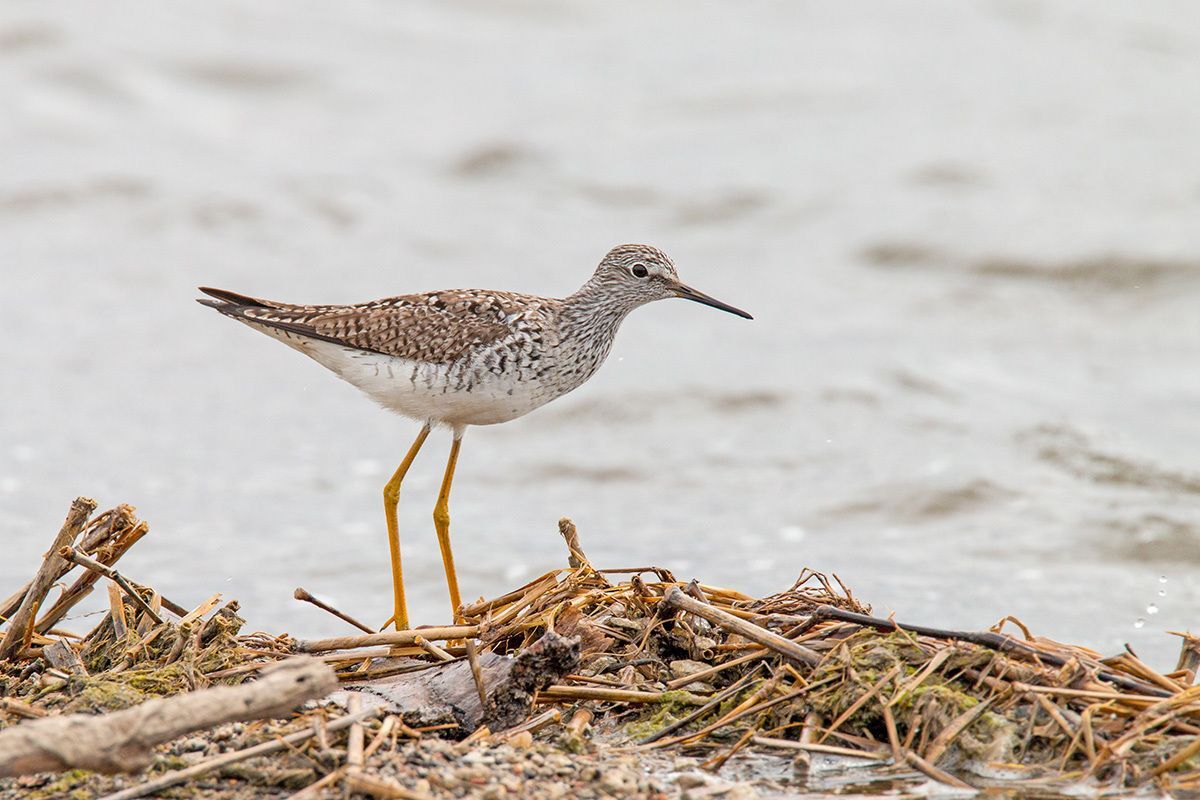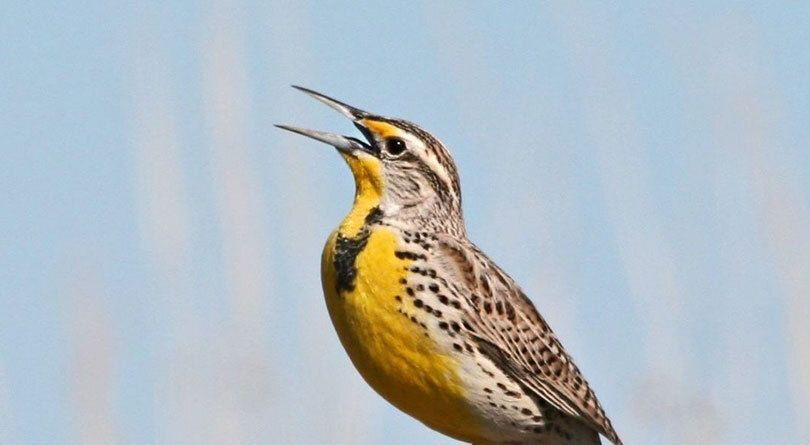
Photo: Lesser Yellowlegs by Mike Benkis
This fall, look for migrating birds using Nebraska as a stopover site for their migratory journeys. The ornithologist Paul A. Johnsgard called the Platte River Valley the “waistline” of the immense north-south geography of shorebird migration from the tundra to South America. Species such as Buff-breasted Sandpipers, Pectoral Sandpipers, Lesser Yellowlegs and other shorebirds find the invertebrates they need to continue south in our mudflats and wetlands.
Think of our backyards and parks as the airport terminals (or train stations, depending on your preference) for songbirds such as Nashville Warblers, American Redstarts, Black-and-white Warblers, and more. Given some time for a layover, what do you tend to do? Find some food, fill up on water, find somewhere nice to sit and rest a bit? Birds have the same priorities when they pause a long-distance flight and “go to ground” at a stopover location for a few days. They need to refuel on food to carry them to the next stopover site. They need habitat that shelters them from predators and the elements.
Visit BirdCast.info to see bird migration forecasts for Douglas County if you’re in Omaha, or for your county of choice. Just a few nights in the season with particularly favorable conditions have very high numbers of birds on the move. For example, looking back at September 2024, the biggest migration night was Sept. 17, with 7.5 million birds moving through Douglas County in just one night, compared to just a few thousand for the days leading up to that night. Going out the morning after a big migratory movement makes it very likely to have a rewarding day of birding. Big migration nights depend on several factors, one of the biggest being weather and prevailing winds, so don’t put a pin on Sept. 17, 2025, expecting the same results as last year. BirdCast’s forecasts put together everything we know about bird migration to make predictions about upcoming migratory movements, so have a look at the three-day forecast when you know you want to go birding soon.
On the other hand, if your approach is to bird a little every day, you can’t really go wrong. Slow days can be instructive, too. Look for resident birds changing behavior and overwintering birds arriving – more subtle behaviors that hold the promise of deepening relationships with local species.
And keep an eye out for birds way up there in aerial habitats out of reach for us landlubbers: species such as Common Nighthawks and Purple Martins, aerial insect-eaters that migrate in large numbers through Omaha. A very large concentration of Purple Martins gathers on autumn evenings over UNMC. Around sunset, look skyward for hundreds of these birds swirling under the clouds.

